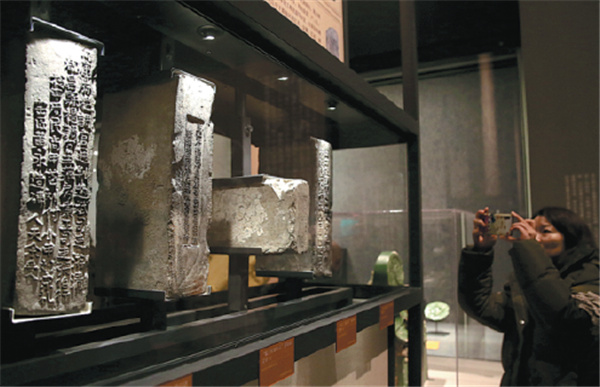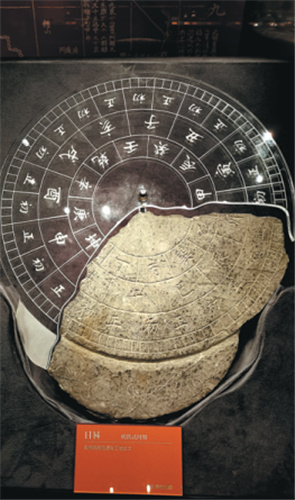 |
|
A visitor takes a picture of bricks taken from the Ming city walls in Nanjing. [Photo by Zou Hong/China Daily] |
"Moving the capital in 1420 didn't mean the end of Nanjing's prosperity," Cao Zhijun, director of the Nanjing Museum Administration, says. "Instead, thanks to a symbiosis of the two cities, China's stability to govern a huge territory spanning from the north to the south was secured at that time."
According to Gao, the change of capital in 1420 marked a split between the political and economic centers.
"Moving the capital saw a population surge in Beijing," he says. "And the Grand Canal (connecting Beijing and the Yangtze River Delta) also supplied the capital with abundant goods from the south. Nanjing continued to enjoy prosperity as a transportation crossroads."
 |
|
A sundial unearthed from Nanjing's Forbidden City ruins. |
Consequently, a focus of the exhibition emphasizes broader development in the mid-Ming Dynasty benefiting different social strata. A blue-and-white porcelain vase, depicting ripe plums, may indicate the literati's cultured taste. A group of colorful glazed bricks portraying elephants shows Sino-foreign cultural exchanges, and gilt Buddhist statues also reveal religious adherence during that dynasty.
Bai Jie, head of the Capital Museum, says: "We can also see how Beijing has gradually become a metropolis."
In Beijing, in spite of the fascinating Forbidden City, which will also embrace its 600th birthday this year, and the vast hutong area-the ancient residential communities-most sections of the Ming Dynasty city wall in the capital have been demolished. However, the city walls in Nanjing are well preserved though the palatial compound they protected no longer exists.
"Perhaps, if we could put the two cities together, we could have a complete example of how an ancient Chinese capital was constructed," Gao says.